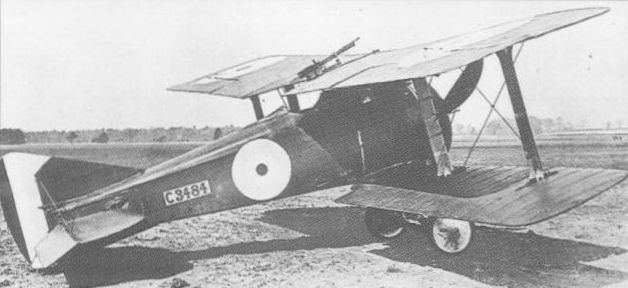Top speed 204 km/h Length 5.64 m Designer Henry Folland | Wingspan 8.54 m First flight February 1918 | |
 | ||
Manufacturer Nieuport & General Aircraft | ||
The Nieuport B.N.1 was a prototype British single-engined fighter aircraft of the First World War. It was a single-engined biplane intended to replace the Sopwith Camel, but only one was built, being destroyed in a crash. The Sopwith Snipe was built instead to replace the Camel.
Contents
Development and design
In 1917, as a result of an official Inquiry (the Burbidge Report) into the activities of the Royal Aircraft Factory, design and construction of aircraft at Farnborough ceased, and the Factory's design teams were broken up. This allowed the Nieuport & General Aircraft Co Ltd, which was formed at Cricklewood, London in 1916 to license produce French Nieuport aircraft, to acquire the services of Henry Folland, previously responsible for the design of the S.E.5 fighter, as chief designer. His first design for Nieuport & General was another fighter, intended to meet Air Board Specification A.1.A for a replacement for the Sopwith Camel, in competition with designs submitted by Sopwith (the Sopwith Snipe), Austin Motors (the Austin Osprey) and Boulton & Paul (the Bobolink).
This aircraft, designated Nieuport B.N.1 (for "British Nieuport"), was a single-engined, single seat tractor biplane of wooden construction. It had equal-span, unstaggered two bay wings, a slab-sided fuselage and was powered by a 230 hp (172 kW) Bentley BR2 rotary engine. A distinctive feature was a ventral fin, as used on the S.E.5 (which was to become a distinguishing mark of many of Folland's designs). Armament was the normal pair of synchronised Vickers machine guns together with a Lewis gun mounted on the upper wing, firing over the propeller.
Three B.N.1s were ordered, the first one flying in February 1918. When it was evaluated, it demonstrated performance that was generally superior to the Snipe, with a much better ceiling. It was destroyed, however, on 10 March 1918 when its engine (only the sixth BR2 built) caught fire in the air. This caused the B.N.1 to be abandoned, with the Snipe being purchased to replace the Camel, and Folland concentrating on the design of the more advanced Nieuport Nighthawk.
Specifications
Data from The British Fighter since 1912
General characteristics
Performance
Armament
